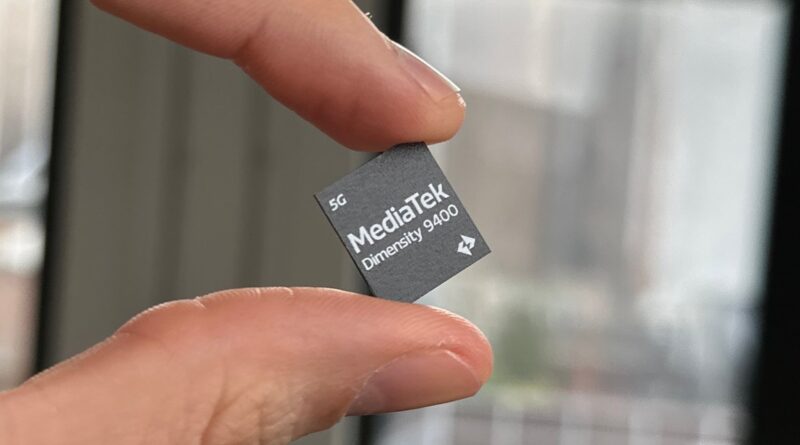What the Hell Is ‘Agentic’ AI on the new MediaTek Dimensity Flagship Mobile Chip?
The China-based chipmaker MediaTek is being explicit about what our phones’ futures will entail. In its best Elmo impression, MediaTek is asking, “Can you say the word “agentic?” What does that mean, exactly? For its newly announced flagship 3nm chip, the Dimensity 9400, the focus is now on how AI assistants can work across apps and even control your phone for you.
To break it down, “agentic” refers to AI agents. Think of those as multiple AI models working in tandem to complete a task. Imagine you put a prompt into an AI chatbot, telling it to call your mother and wish her a happy birthday on your behalf. Various AI models will create the birthday message, look into your contacts for your mother’s number, and then put in the call using an AI-generated voice.
Agents are a buzzword among the higher echelons of Silicon Valley, but the term “agentic” can’t leap off the concept sheet and onto our phones without the underlying technology behind it. The Dimensity 9400 is just the first chip officially revealed this year, and it claims it can support agents that are supposed to power the supercharged assistants on our phones. It claims to support 80% better LLM performance than the Dimensity 9300 and twice as good AI art generation with a new neural processor.
The other end of that is a so-called “Dimensity Agentic AI Engine” that’s made to help developers set a work path for various AI-focused apps. MediaTek claims its chips can do around 50 tokens per second for AI computation. Compare that with the current Qualcomm Snapdragon 8 Gen 3’s 20 tokens per second, though rumors and leaks suggest Qualcomm will reveal Gen 4 later this month. None of the current leaks, like those on SmartPrix and WCCFTech, show comparisons between both chips’ NPUs.
The Dimensity 9400 is an “All Big Core” design with a single ARM cortex-X925 with a 3.62 GHz clock speed, along with three Cortex-X4 and four Cortex-A720 cores. It’s supposed to get 35% better single-core and 28% better multi-core performance than the 9300. It supports a 100% increase in the L2 cache and a 50% improvement in the L3 cache compared to the Dimensity 9300. It’s also supporting a 12-core ARM Immortalis-G925 GPU with better ray tracing support.
Otherwise, the new MediaTek chip supports LPDDR5X memory at 10.7 GBps and is supposed to improve power efficiency. Funnily enough, it claims to support “tri-fold smartphones,” of which there’s currently only the Huawei Mate XT to contend with.
For the most part, the Dimensity 9300 and 9300+ were tied to brands you won’t find in the U.S., such as Vivo, Oppo, and Redmi. As revealed last month, that CPU now also supports the Samsung Galaxy Tab S10 Ultra and S10+. But as for other U.S.-based products, the OnePlus Pad 2 eschewed the original’s Dimensity 9000 chip for the Qualcomm Snapdragon 8 Gen 3.
Unless U.S. lawmakers’ attitude to international chipmakers changes sometime soon (it won’t), MediaTek’s chips will still be relatively rare for products in the U.S. But that belies just how all chipmakers, not just those in the U.S., are tuning their chips for our upcoming AI assistants. Google’s Gemini is already taking root on Android, and Apple Intelligence is set to do a complete makeover of iOS on iPhones over the next few months. The point is, it doesn’t matter which brand you buy; you’re going to hear the word “agentic” a lot more in 2025 and beyond.
The real question for 2025 is whether agentic AI will work as advertised. So far, we’ve seen AI models perfectly capable of handling intense tasks, but those are often processed off-device. So far, on-device AI is simply offering a more complicated assistant apparatus that’s capable of lying to you. The real challenge will be having this AI capable of reaching across apps and performing tasks without calling your mother to tell her something you’ll need to apologize for later.

